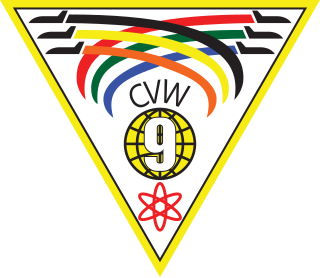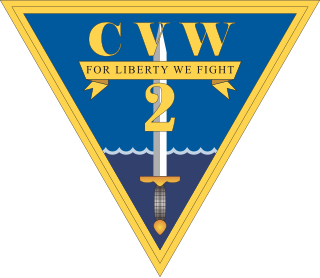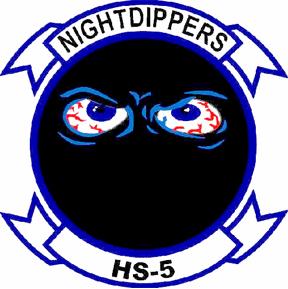
USS Kitty Hawk (CV-63), formerly CVA-63, was a United States Navy supercarrier. She was the second naval ship named after Kitty Hawk, North Carolina, the site of the Wright brothers' first powered airplane flight. Kitty Hawk was the first of the three Kitty Hawk-class aircraft carriers to be commissioned and the last to be decommissioned.

USS Dwight D. Eisenhower (CVN-69) is a nuclear-powered aircraft carrier currently in service with the United States Navy. Commissioned in 1977, the ship is the second of the ten Nimitz-class aircraft carriers currently in service, and is the first ship named after the 34th President of the United States and General of the Army Dwight D. Eisenhower. The vessel was initially named simply as USS Eisenhower, much like the lead ship of the class, Nimitz, but the name was changed to its present form on 25 May 1970. The carrier, like all others of her class, was constructed at Newport News Shipbuilding Company in Virginia, with the same design as the lead ship, although the ship has been overhauled twice to bring her up to the standards of those constructed more recently.

The seventh USS Ranger (CV/CVA-61) was the third of four Forrestal-class supercarriers built for the United States Navy in the 1950s. Although all four ships of the class were completed with angled decks, Ranger had the distinction of being the first US carrier built from the beginning as an angled-deck ship.

Richard Chester Macke was a naval aviator and a former four-star admiral in the United States Navy. He last served as Commander of United States Pacific Command (USPACOM) from July 19, 1994, until January 31, 1996. After his navy career, Macke served as a vice president of Wheat International Communications Corporation.

Carrier Air Wing Nine (CVW-9) is a United States Navy aircraft carrier air wing based at Naval Air Station Lemoore. The Air Wing is currently assigned to the aircraft carrier USS Abraham Lincoln (CVN-72). The Tail Code of aircraft assigned to CVW-9 is NG.

Strike Fighter Squadron 154 (VFA-154), also known as the "Black Knights", is a United States Navy strike fighter squadron stationed at Naval Air Station Lemoore. The Black Knights are an operational fleet squadron flying the F/A-18F Super Hornet. They are currently attached to Carrier Air Wing Eleven and deployed aboard the aircraft carrier USS Theodore Roosevelt. Their tailcode is NH and their callsign is "Knight".

Strike Fighter Squadron 97 (VFA-97) is a naval aviation squadron of the United States Navy. It is equipped with the F-35C Lightning II and is stationed at Naval Air Station Lemoore. The squadron is nicknamed "Warhawks" and it is currently assigned to Carrier Air Wing Two, tail code "NE”. The squadron was originally established as Attack Squadron 97 (VA-97) on 1 June 1967 and redesignated VFA-97 on 24 January 1991.

Carrier Air Wing Two (CVW-2) is a United States Navy aircraft carrier air wing based at Naval Air Station Lemoore. The air wing is attached to the aircraft carrier USS Carl Vinson (CVN-70).

Helicopter Sea Combat Squadron SIX (HSC-6), is a helicopter squadron of the United States Navy. It was established as Helicopter Antisubmarine Squadron SIX (HS-6) on 1 June 1956. Its nickname is Screamin’ Indians. On 8 July 2011 it was redesignated Helicopter Sea Combat Squadron SIX (HSC-6). It is based at Naval Air Station North Island, is part of Carrier Air Wing 17 and deploys aboard the aircraft carrier USS Nimitz (CVN-68).

Helicopter Sea Combat Squadron FIVE (HSC-5), also known as the Nightdippers, is a helicopter squadron of the United States Navy based at Naval Station Norfolk operating the Sikorsky MH-60S Seahawk. The Nightdippers are a part of Carrier Air Wing Seven and deploy aboard USS Harry S. Truman (CVN-75) to provide anti-surface warfare, search and rescue, vertical replenishment, Combat Search and Rescue and Naval Special Warfare Support capabilities to the carrier strike group.

Electromagnetic Attack Squadron 130 (VAQ-130), also known as the "Zappers", is an EA-18G Growler squadron of the United States Navy based aboard Naval Air Station Whidbey Island. Part of Carrier Air Wing 3, the Zappers deploy aboard the aircraft carrier USS Dwight D. Eisenhower. VAQ-130 is the oldest electromagnetic warfare squadron in the U.S. Navy.

Electronic Attack Squadron 134 (VAQ-134) is an electromagnetic warfare squadron of the United States Navy. It is nicknamed "Garudas" and is based at Naval Air Station Whidbey Island, Washington. The squadron is currently equipped with the Boeing EA-18G Growler.

Carrier Strike Group 11 is a U.S. Navy carrier strike group. The aircraft carrier USS Nimitz (CVN-68) is the strike group's current flagship. Other units currently assigned to the group include the cruisers USS Lake Erie (CG-70) and USS Princeton (CG-59), and Destroyer Squadron 9.

Carrier Strike Group Seven was a U.S. Navy carrier strike group active from October 2004 until 30 December 2011. The strike group's antecendants included two previous aircraft carrier formations, Carrier Division Seven and Carrier Group Seven. Its heritage thus includes the Second World War, the Vietnam War, and the Cold War, as well as the first and the second Persian Gulf wars, encompassing a total of 34 deployments to the Western Pacific Ocean and Persian Gulf.

Carrier Strike Group 5, also known as CSG 5 or CARSTRKGRU 5, is the U.S. Navy carrier strike group assigned to the United States Pacific Fleet and permanently forward deployed to the U.S. 7th Fleet. The Strike Group Flagship is the Nimitz-class aircraft carrier USS Ronald Reagan (CVN-76) which also embarks Strike Warfare Commander, Carrier Air Wing Five and its nine squadrons. As of June 2015, CSG 5 includes three Ticonderoga-class cruisers and Destroyer Squadron Fifteen, which serves as the Sea Combat Commander and is responsible for seven assigned Arleigh Burke-class destroyers.
The United States Navy sent their naval forces in the Red Sea and Persian Gulf including six Aircraft Carriers to take part in Operation Desert Storm, including others that arrived before or after the war started and ended.
In 1989, the United States Navy was on the verge of massive cuts to military spending cuts including ship and aircraft procurement. These forces were expected to fight the Soviet Union, Warsaw Pact and other potential adversaries in case of a war breaking out. At this time, the USS Kitty Hawk (CV-63) of the Pacific Fleet was out of commission for Service Life Extension Program (SLEP) modernization leaving the 3rd Fleet with less carriers.















